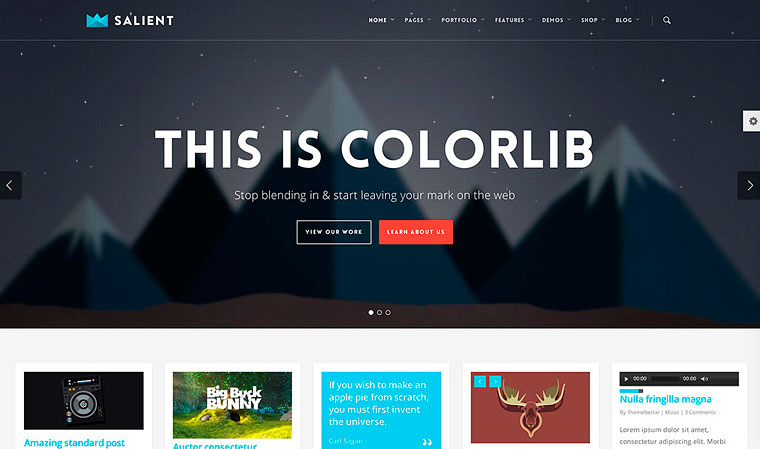Why Every Business Needs a Custom Web Design for Maximum Impact
Why Every Business Needs a Custom Web Design for Maximum Impact
Blog Article
Recognizing User Experience: Secret Principles for Successful Website Design
In the realm of internet style, understanding customer experience (UX) is critical to creating systems that not only attract but also keep users. Key principles such as user-friendly navigating and reliable feedback systems play critical functions in fostering user complete satisfaction. In addition, factors to consider for ease of access make sure that all users can involve with the web content perfectly.
Importance of User Experience

In the realm of web design, one can not underestimate the value of individual experience (UX) as a pivotal aspect that straight influences the success of an internet site. When customers encounter a interesting and instinctive interface, they are a lot more most likely to discover the content, transform right into clients, or share their experiences with others.
In addition, the significance of UX extends past simple looks. It includes the general performance of a site, guaranteeing that navigation is smooth and info is conveniently accessible. Sites that focus on UX are typically viewed as more trustworthy and trustworthy, which can have an extensive effect on conversion prices. On the other hand, bad UX can bring about stress, resulting in high bounce prices and lost opportunities.
Eventually, buying user experience is not simply a design choice; it is a strategic choice that can set apart a brand name in a jampacked marketplace. By concentrating on UX, services can develop significant interactions that resonate with users, leading the way for continual success in the digital landscape.
Functionality Concepts
Effective internet design depends upon the application of vital usability principles that ensure an internet site is both easy to use and practical. Central to these concepts is the principle of intuition, where customers can browse the site effortlessly without extensive guideline. Clear navigating structures, including well-labeled menus and consistent layouts, enhance this user-friendly experience, enabling customers to situate info quickly.

Consistency is equally vital; maintaining uniformity in style aspects, terms, and treatments throughout the site helps to minimize confusion. Customers ought to not have to relearn how to connect with different areas of the site.
Furthermore, error avoidance and recovery are vital for usability. Internet sites should be created to minimize the possibility of customer mistakes, and when errors take place, clear and positive error messages need to direct individuals in the direction of resolution.
Access Factors To Consider
Making sure accessibility in website design is vital for creating inclusive electronic experiences that satisfy all individuals, consisting of those with impairments. Availability factors to consider involve creating sites that suit diverse needs, allowing customers with that site aesthetic, auditory, cognitive, or motor disabilities to browse and communicate efficiently.
To attain this, internet developers need to follow established guidelines, such as the Web Web Content Access Guidelines (WCAG) These guidelines offer a framework for making content perceivable, operable, reasonable, and durable. Secret methods include making certain sufficient color contrast, supplying message options for non-text material, and making certain key-board navigability.
Additionally, semantic HTML should be utilized to improve display visitor compatibility, enabling users with visual impairments to comprehend the framework and definition of web content with ease. web design. Providing clear, concise directions and making use of straightforward language can even more enhance functionality for individuals with cognitive handicaps
Normal availability testing, including actual individuals with handicaps, is vital to recognize obstacles and boost the customer experience. By prioritizing access, internet designers not only adhere to lawful requirements however likewise foster a more equitable digital landscape, ultimately benefiting every person via boosted usability and involvement.
Visual Layout Components
A myriad of visual style aspects plays an essential role in forming user assumptions and experiences on a website. These aspects include color pattern, typography, imagery, format, and whitespace, each adding to the overall visual appeal and effectiveness of a site.

Color design stimulate feelings and can affect individual activities; for instance, cozy colors might produce a sense of seriousness, while awesome shades usually advertise peace. Typography, on the various other hand, influences readability and can develop a brand name's personality - web design. The choice of font design and size should straighten with the website's objectives and target market
Images, including pictures and icons, improves narration and can significantly impact user engagement. High-quality visuals develop a feeling the original source of professionalism and trust, while poor-quality images might diminish the customer experience.
Layout and whitespace are equally essential, as they lead users with the material. A well-structured format assists individuals find details swiftly, while ample whitespace stops mess, helping with an extra pleasurable browsing experience.

Testing and Version
Customer screening and model are fundamental components of an effective website design process. These methods make it possible for designers to collect beneficial comments from real customers, making sure that the final product satisfies their demands and expectations. Individual testing involves observing how real users interact with a web site, determining usability concerns, and recognizing customer habits. This direct responses is crucial in disclosing discomfort factors that may not appear throughout the style phase.
Version, on the other hand, is the process of improving the design based on the insights got from user testing. By making incremental modifications and re-evaluating the layout, groups can boost performance, improve aesthetic appeals, and optimize user engagement. This cyclical approach cultivates a society of continual enhancement, permitting developers to adapt to user requirements and arising trends properly.
Additionally, integrating both customer screening recommended you read and version into the design process results in more informed decision-making and eventually causes an extra user-centered item. By accepting these principles, web designers can create a lot more intuitive, interesting, and effective experiences that reverberate with their target audience, eventually driving greater customer fulfillment and retention.
Verdict
In verdict, customer experience is a critical element of efficient web style, incorporating usability, access, and visual factors to consider. Continuous screening and model serve as vital procedures for resolving and recognizing individual discomfort points, making sure that web styles stay versatile to progressing demands.
In the world of internet style, understanding user experience (UX) is extremely important to producing systems that not just draw in yet also keep individuals.In the world of internet style, one can not take too lightly the relevance of user experience (UX) as an essential component that directly affects the success of an internet site. Customer screening involves observing exactly how genuine customers communicate with a site, determining functionality issues, and recognizing individual habits.In conclusion, user experience is a critical component of reliable internet design, encompassing functionality, accessibility, and visual considerations. Continuous screening and version serve as essential processes for recognizing and attending to customer pain points, making certain that internet designs stay adaptable to evolving needs.
Report this page